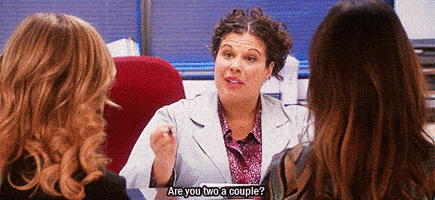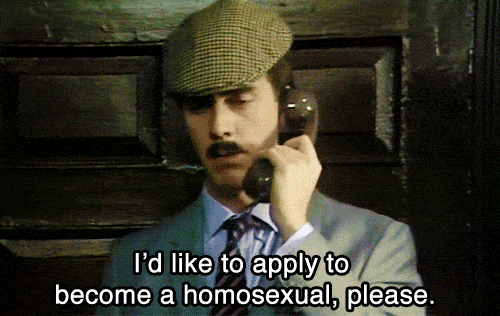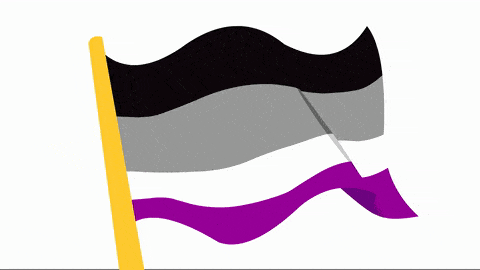



Hello!
Have you ever wondered where your place is on the Kinsey scale?
Are you 100% heterosexual or homosexual? Perhaps you are somewhere in between.
Take the sexuality test and find out your sexual orientation today.
The Kinsey scale, also called the Heterosexual-Homosexual Rating Scale, was created by sexologist Alfred Kinsey and his colleagues Wardell Pomeroy and Clyde Martin. Kinsey and his team interviewed thousands of people about their sexual histories.
According to their findings, 37% of the men interviewed and 13% of the women had a same-sex experience between adolescence and old age. It showed that human sexuality cannot be defined as exclusively heterosexual, homosexual, or bisexual, and is more of a range instead of neat labels.
The result of Kinsey’s studies was the Kinsey scale which organizes people into eight categories. It ranges from 0 to 6, with an additional category of X.
O means exclusively heterosexual attraction or behavior.
1 is predominantly heterosexual, with only slight inclinations of homosexual attraction or behavior.
2 means predominantly heterosexual, with more than slight predispositions for homosexual attraction or behavior.
3 is equally heterosexual or homosexual.
4 is predominantly homosexual, with more than slight predispositions for heterosexual attraction or behavior.
5 means predominantly homosexual, with only slight inclinations of heterosexual attraction or behavior.
6 is exclusively same-sex/homosexual attraction or behavior.
X means no socio-sexual contacts or reactions, otherwise described as asexual.
Contrary to popular perception and many tests on the internet, there is no official Kinsey “test.” The original Kinsey research team gave a number to each person based on their sexual history. You can also apply a category to yourself that you feel best describes your sexual identity.
There are limitations to the Kinsey scale. Even the father of the sexual revolution himself admitted that these categories could not fully capture the variety of human sexuality. The scale doesn’t account for all sexualities that exist, like pansexual, demisexual, and others.
The Kinsey scale places heterosexuality and homosexuality on the opposite ends of the spectrum. It assumes that the more someone identifies as heterosexual, the less they identify as homosexual, and vice versa.
However, the studies show that opposite-sex and same-sex attraction are not related to one another, but experienced separately. This is why heterosexuality, homosexuality, and bisexuality should be treated as separate entities.
The way the scale describes asexuality has also been challenged by psychologists. According to Kinsey, asexuality means a lack of sexual behavior, whereas in a modern sense we understand asexuality as a lack of sexual attraction.
Kinsey’s model categorizes people based on sexual behavior and attraction, but these are two different things that should not be conflated. For example, a man can be attracted to both men and women, but only choose to engage in sexual behavior with women.
Kinsey’s scale doesn’t address the question of sexual identity, or the label one uses to describe their sexual orientation. A person can call themselves heterosexual, even if they evidently experience same-sex attraction.
The scale also doesn’t differentiate between romantic and sexual orientation. It’s possible for a person to be sexually attracted to people of one gender and romantically attracted to another gender.
Despite its flaws, the Kinsey scale has been hugely influential and changed people’s perceptions of sexuality. It was the first time someone suggested that sexual attraction cannot be fitted into neat boxes. It has also been an inspiration for other scales.
One of them is The Klein Sexual Orientation Grid, created by Fritz Klein, the founder of the American Institute of Bisexuality, in 1978. It represents” a more nuanced view of human sexuality. The KSOG includes variables such as sexual attraction, sexual behavior, sexual fantasies, emotional preference, and social preference. For each item, respondents rate their preferences at three points in time: past, present, and ideal. The Klein Grid includes a possibility that can fluctuate and change over time.
The Storms Sexuality Axis was developed by Michael D. Storms, a psychologist at the University of Kansas, in 1980. Storms uses the x-y scale to explain sexuality, with the x-axis representing homosexuality and the y-axis representing heterosexuality. A zero value along either axis indicates no orientation in that direction, while a zero value along both axes indicates total asexuality.
If you aren’t comfortable with placing yourself on the scale, you can use one of the many available terms to describe your sexual orientation. Some of these terms include:
Bisexual – it means you’re to people of two or more genders.
Asexual – you experience little to no sexual attraction to anyone.
Demisexual – you only experience sexual attraction after developing an emotional bond with someone.
Pansexual – you are attracted to people of both genders.
The same can apply to romantic orientation. The terms to describe it include:
Aromantic – you experience little to no romantic attraction to anyone.
Biromantic – you’re romantically attracted to people of two or more genders.
Heteroromantic – you’re only romantically attracted to people of a different gender to you.
Homoromantic – you’re only romantically attracted to people of the same gender as you.
Are you ready to discover your sexual orientation in our sexuality test?
Take the sexuality test and find out which label fits you the best.
Remember – this is for fun.